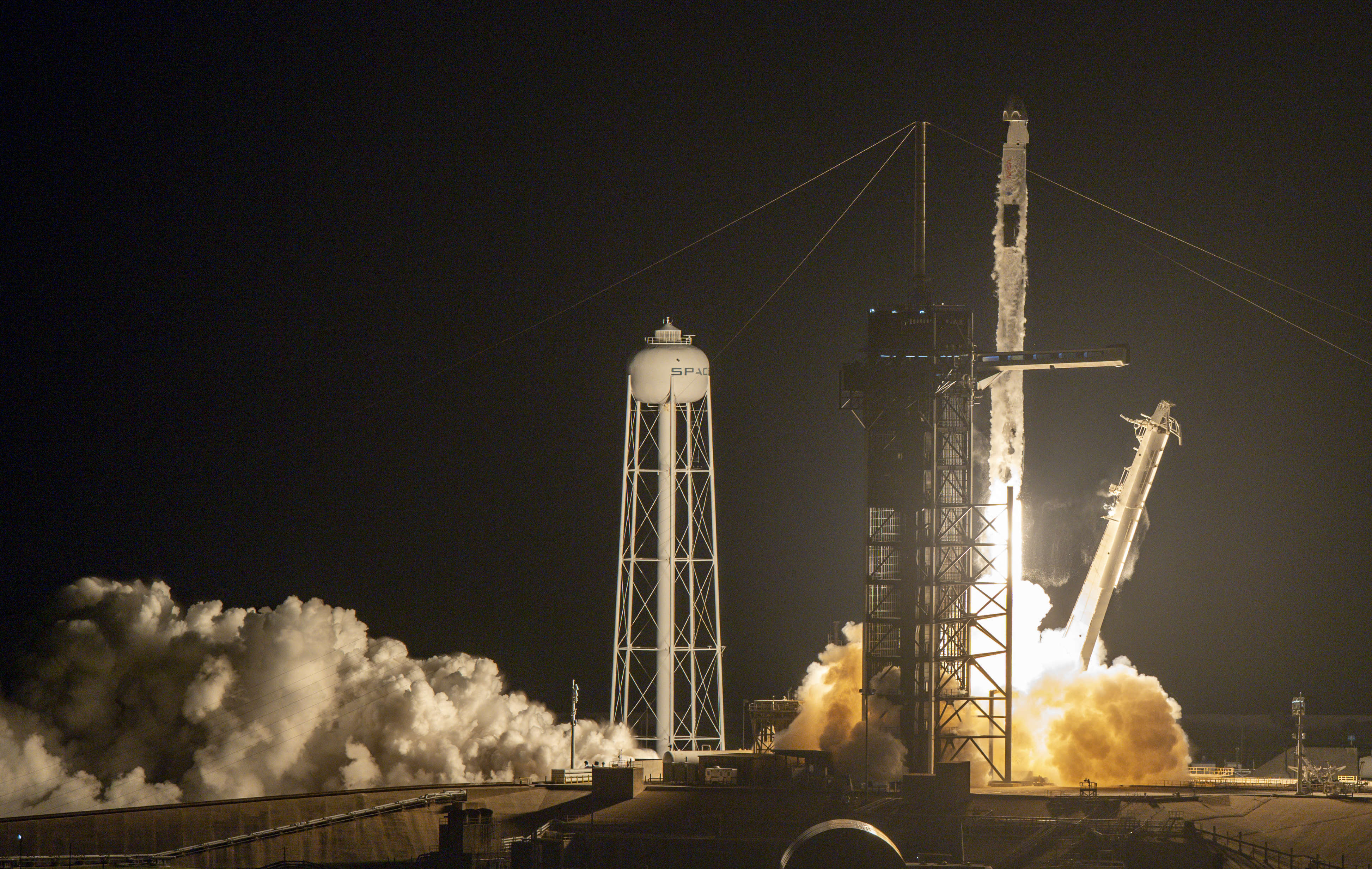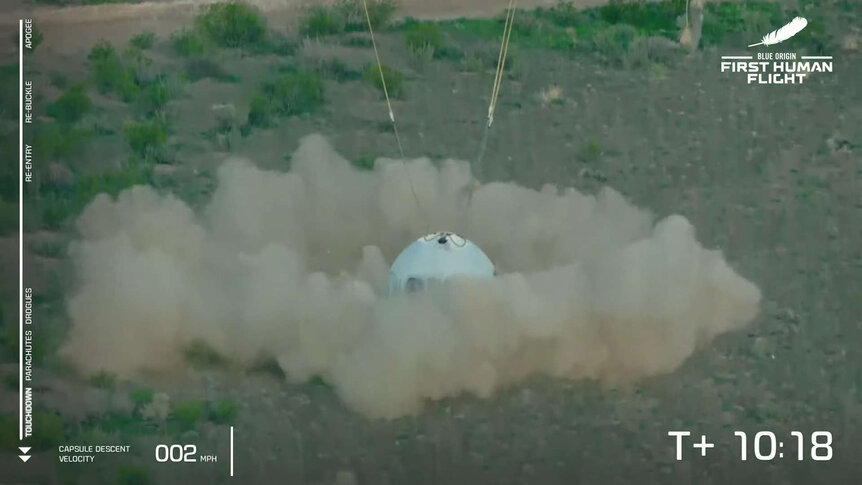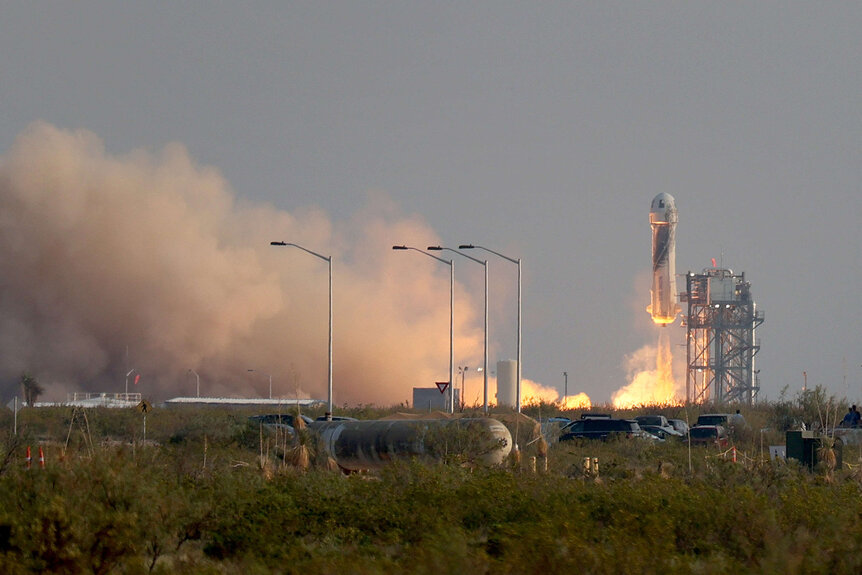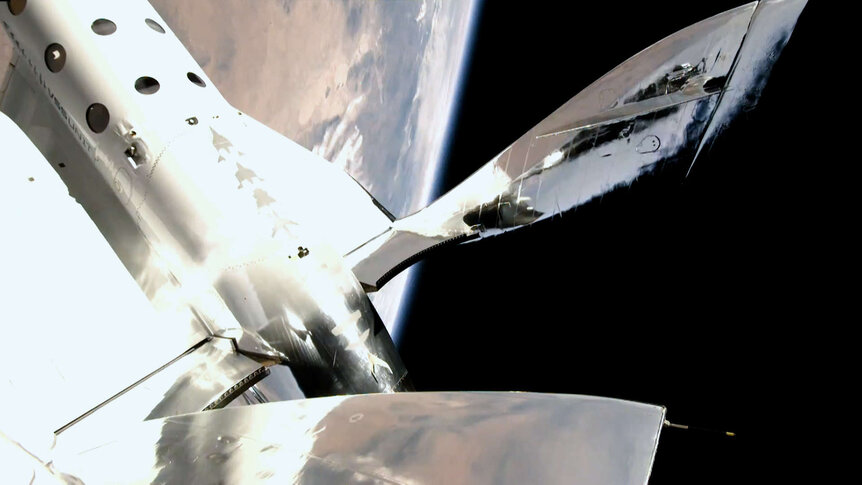Create a free profile to get unlimited access to exclusive videos, sweepstakes, and more!
Do you have to be a billionaire to ride a rocket to space? No, but it helps.

Yesterday, Jeff Bezos — the founder and CEO of Amazon, and, not incidentally, Blue Origin — took a ride into space along with three other people inside the capsule of a New Shepard rocket.
It was a suborbital flight, which means they essentially went straight up and then back down, reaching a height of over 107 km above Earth’s surface. That is higher than the generally accepted altitude of 80 km (50 miles) marking the edge of space, making the four passengers officially astronauts.
Much has been made of this flight, along with Richard Branson’s flight last week on board Virgin Galactic’s VSS Unity. Both men are billionaires, and both flew on craft built by their own companies. Elon Musk has not yet flown on a SpaceX rocket, but he too is a billionaire and plans to get to space someday.
Clearly, flying to space on your own spacecraft is an expensive endeavor. Even being a tourist is pricey; the first paid space tourist was Dennis Tito, who reportedly paid $20 million to ride into orbit on a Russian Soyuz rocket in 2001.
Note that Tito is a billionaire too (he was “only” a multi-millionaire at the time, to be clear). There have been several space tourists since, and they’ve all been extremely wealthy (or have been backed by people who are).
So is space travel an elite rich person’s game? Or will the price come down to within reach of more median incomes?
Currently, it’ll set you back $250,000 or so to fly Virgin Galactic. Blue Origin hasn’t announced what it will cost to ride with them, but it will certainly be at least that much. Orbital flight is far more difficult and expensive, with a lot more overhead (you’re in space for days, not minutes); passengers pay SpaceX $55 million per head for that privilege (which includes a stay in the International Space Station; just a ride in a Dragon capsule to orbit and back would undoubtedly be far less).
But that’s for now. Still, predicting the future of spaceflight is a notoriously tricky game. History turns on single events. SpaceX was within a single launch of bankruptcy. The Virgin Galactic flight was delayed years due to a fatal accident. Many such examples are easily found.
But reasonable arguments about access to spaceflight can be made on both sides of this issue, as long as you assume progress will continue more or less as it has in the past few years.
The first, most important event was in 2015, when SpaceX being able to launch a Falcon 9 to orbit and retrieve the first stage booster, saving tens of millions of dollars per flight. SpaceX now charges roughly $2,000 per kilogram to get to low-Earth orbit, while the NASA Space Shuttle cost was more like $60,000. Mind you, this not an entirely fair comparison; private companies are more flexible and can cut costs in many ways, while government agencies cost more but can be more reliable in the long run in case of failure (and also much of the government cost is due to research and development of the tech in the first place).
SpaceX is now working toward getting their Super Heavy rocket tested, which is the first stage for the immense Starship vehicle, a two-stage-to-orbit rocket that, once operational, will be able to lift the most mass to orbit of any rocket in history. It’s designed to carry 100 passengers, and NASA has already chosen Starship as a potential lunar vehicle for its Artemis crewed Moon landing missions. Designed to be inexpensive and launch frequently, the aspirational launch cost may drop to a mere $2 million.
And now there’s competition on the horizon. The Blue Origin New Shepard rocket is suborbital, but they’re working on the New Glenn vehicle that is capable of achieving orbit. All the flights we’ve so far from Blue Origin have been working toward that goal, with testing how to re-land the booster and making a crew-capable capsule. Bezos has mentioned a future rocket called New Armstrong (given the naming convention, clearly intended for lunar flights) and they have worked on a lunar lander called Blue Moon. NASA didn’t pick it for Artemis, but they may yet compete for contracts for future lunar missions.
Virgin Orbit (part of the Virgin group along with Galactic) has also successfully launched a rocket to orbit that carries small satellites to deploy, though it isn’t capable of carrying a crew.
All of these innovations and competition will drive cost down. But how much?
That’s the big question. Many people compare to this to air travel, which was very expensive at first and over the years became so cheap that some flights are now well under $100.
This comparison is a little iffy, though. The amount of energy and the way it is expended to move an airplane across the country is very different than what’s needed to go to orbit (which requires a velocity of 8 km/sec or else back down you come)*. That means huge thrusts sustained for many minutes, not to mention coming back down safely (and keeping passengers alive in the middle part). A suborbital flight is much less difficult, but not exactly easy, and still requires a lot more tech than a typical airplane fight.
Think of it this way: The first powered flight was in 1903. The first commercial flight was in 1914, barely a decade later. Commercial spaceflight took 60 years after the first crewed launch.
The bar to lower prices per seat depends on lowering the cost of the tech and overhead (by reusing boosters, for example) but also reliability, which is far more costly for a rocket capable of lofting people. So far things look good there, with both SpaceX and Blue Origin reusing hardware (rockets and capsules), but again with people on board the regulatory agencies tend to be a lot more careful. One loss of vehicle and passengers per 100 launches would be a terrible record. There’s been one loss of a Falcon 9 during launch (a helium tank ruptured causing the catastrophe; that problem has since been fixed) and one while pre-loading fuel before launch. That’s out of over 120 flights, but we won’t truly know these statistics better until there are a lot more flights.
Given all this, and projecting shakily into the future, it’s possible that space flight, even orbital flight may drop down to being merely very expensive as opposed to ridiculously so (as it is now). I have a hard time thinking it’ll drop to hundreds of bucks per flight given current trends. But again, it’s very early in all this and extrapolating is dangerous — so I’ll readily admit I may be wrong.
If it sounds like I’m waffling here, of course I am. Have I mentioned this is a notoriously tricky game? My goal here isn’t so much to make a firm prediction as to show why making a firm prediction is hard.
It’s early days yet. There has been exactly one crewed flight by Blue Origin, four by Virgin Galactic, and two by SpaceX. These are the first steps down — or up — a very long path.
*Not to mention the carbon pollution cost. I’ll note too that in all of this I’m talking solely about the price of a ticket; there are dozens of other considerations on this topic including how space is explored, what science can be done, even colonialism and social costs. These are all deeply rich and interesting topics, but far too complex to be explored here. I encourage you to read more about them — I certainly have been.


















